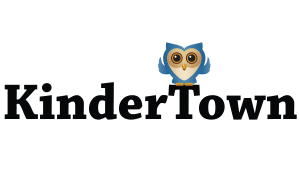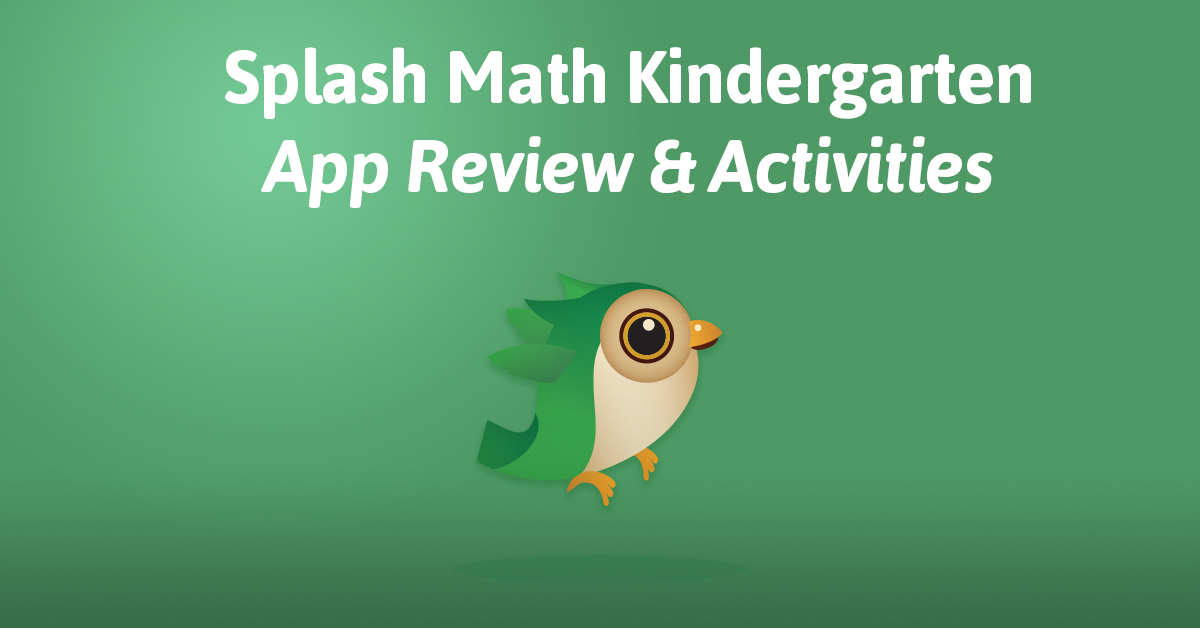Splash Math Kindergarten
Today, I’m letting all of you in on a little secret. I don’t like worksheets and workbooks, especially in apps for young kids. Yes, we all come at these things with some sort of bias, and the people at KinderTown are no different – but for good reason! I like kids to be creative, challenged and exposed to rich technology experiences. With most apps I am looking for the good, the moments of educational value, so we can approve them. This is not usually the case when I open up a workbook-style app.
Splash Math Kindergarten, is, well, hard not to be called a workbook app. Yet, it is the most thorough workbook-style app I’ve ever played! It’s also an app I would have gladly used in my kindergarten classroom. Not only is the app completely engaging for young children, but the adult features and customizations also add incredible depth to the content.

Splash Math Kindergarten is able to provide kids a wealth of math learning or focus specifically in an area your child needs some more explicit practice on. This is critical for teachers and parents to customize the app based on an individual child’s needs.
What kids experience in the app are a series of 10 questions which are answered multiple choice and fill in the blank. The app is supportive with intuitive design helping kids count aloud and giving direct feedback when answering a question incorrectly. You’ll find the series of activities are varied enough to be interesting but still connected around one skill area (instead of having kids jump around from shapes to counting to adding).
Coming from a reviewer that rarely raves over a workbook app, Splash Math Kindergarten has tremendous value!
Transform your workbooks and printables into rich play experiences! Don’t let those pages of your child’s artwork and connect the dots go to waste. Here are two creative ideas for stretching out the life of kids workbooks.
Activity 1: Turn Your Workbooks Into a Board Game

Standard kids board games typically contain four items:
• A path to travel (the game board)
• Markers unique to each player
• A spinner or dice for setting the number of places to move
• A challenge to complete to move your piece
Tell your kids that and they will make their own board game in a matter of minutes. It might end up more elaborate than Candy Land, but the game will be theirs. Encourage them to look at other board games and think about what different spaces can be labeled as (for example: lose a turn, go back two).
Next, take out a workbook that you have around the house. Cut out the individual problems on each page and glue them to pieces of cardboard or construction paper. Your kids now have a set of game cards to use for their board game. When it’s your turn, flip over a game card and solve the problem (or complete the activity). If you solve the card correctly you get to move ahead!
It’s up to you in this activity if you want your game cards to be reusable or not. Kids can just solve the problem right on the cards. Which you might want to do if you are playing this game with younger kids. You can also keep paper close by for working out problems so you can use your cards again and again.
Activity 2: What To Do With Leftover Workbooks
Kids (and their parents) love workbooks, however, once they are used up what can be done with them? One thing I know for a fact is that kids love cutting things. Just using scissors, paper, and glue, you can transform these used up workbooks into new activities. Here are a few suggestions:

1. Rainbow Alphabet: Have your child cut out one of each letter of the alphabet from the workbook. On the floor or a table, arrange them alphabetical order. Arrange the letter in the shape of a rainbow by putting A in lower left and Z in lower right with M at the top making an arch. If you want to divide it into quadrants add E and T. Once the rainbow is complete gameplay starts. (Can also be done with magnetic letters on the fridge).
Florida Center for Reading Research has a template of the alphabet arc (rainbow) to help you get started.
2. Numberline: Make your own number line by cutting apart an old workbook.
3. Create a Rebus Story: Our workbooks are filled with pictures the kids have colored. Cut out 5 pictures from the workbook and arrange them on a piece of paper. Have your child tell you a short story inspired by these pictures. Turn it into a rebus story by writing simple words your child can decode (read) between the pictures.

